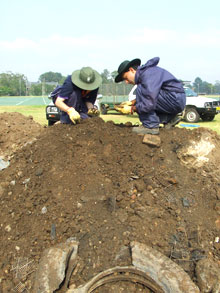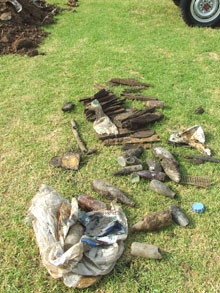
Sydney 'dig' to determine greenhouse emissions from landfills

A ‘dig’ at a former rubbish tip in Sydney is providing scientists with the clues needed to determine the level of greenhouse emissions from wood products in landfills.
About 200 kilograms of timber that had been buried for 44 years in the form of beds, mouldings, fence palings and tree parts was excavated from the old Meadowbank tip in Ryde last week and taken to NSW Department of Primary Industries (DPI) laboratories at West Pennant Hills.
From bottles found at the site the material is dated 1963.
The three-year research program will help establish how much of the greenhouse gas methane is emitted from decomposing wood.
“We expect it will provide a greater understanding of the life-cycle of wood products and hence their environmental ‘footprint’ ”, said DPI project leader Fabiano Ximenes.
Earlier research indicated that wood decomposes at a rate far less than previously thought. Most of the new material was excavated intact and showed very little sign of deterioration.
Mr Ximenes said that conditions in landfills turn anaerobic very quickly because oxygen supplies are limited. Fifty per cent of gases emitted by bacteria are the greenhouse gas methane; the other half is carbon dioxide.

Over the next few months, DPI researchers will sift through the wood and wood products and examine samples under a microscope. Different timber species will be identified and then the rate of decomposition determined.
Research to date indicates that wood products continue to store carbon – and therefore to be carbon ‘sinks’ – long after timber is felled.
Currently this environmental benefit is not taken into account in carbon trading schemes. If it was, this could enhance the commercial value of plantation forestry.
The $450,000 research project is funded by the NSW Department of Environment and Conservation in conjunction with DPI.
High resolution images are available.
Email:

